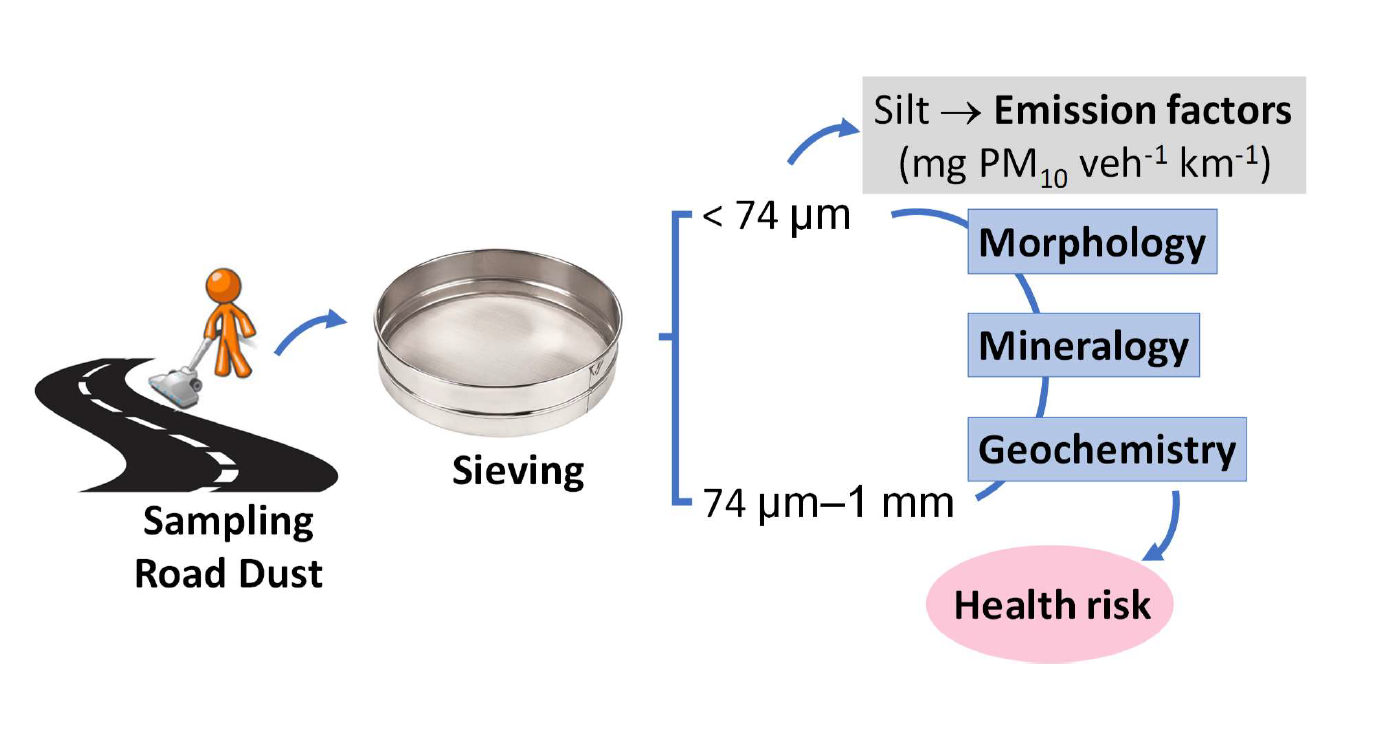Road dust resuspension, especially the particulate matter fraction below 10 µm (PM10), is one of the main air quality management challenges in Europe. Road dust samples were collected from representative streets (suburban and urban) of the city of Viana do Castelo, Portugal. PM10 emission factors (mg veh-1 km-1) ranging from 49 (asphalt) to 330 (cobble stone) were estimated by means of the United Stated Environmental Protection Agency method. Two road dust fractions (< 0.074 mm and from 0.0074 to 1 mm) were characterised for their geochemical, mineralogical and morphological properties. In urban streets, road dusts reveal the contribution from traffic emissions, with higher concentrations of e.g. Cu, Zn, and Pb. In the suburban area, agriculture practices likely contributed to As concentrations of 180 mg kg-1 in the finest road dust fraction. Samples are primarily composed of quartz, but also of muscovite, albite, kaolinite, microcline, Fe-enstatite, graphite and amorphous content. Particle morphology clearly shows the link with natural and traffic related materials, with well-formed minerals and irregular aggregates. The hazard quotient suggests a probability to induce non-carcinogenic adverse health effects in children by ingestion of Zr. Arsenic in the suburban street represents a human health risk of 1.58 x 10-4.

